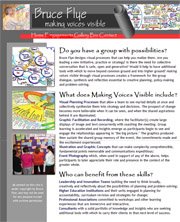
The diagram below was found painted on the wall in the museum of the San Xavier Mission in
To the Tohono O'odham, the man at the top of the maze symbolizes the birth of the individual, the family, the tribe and Iitoi (our Creator). As the figure goes through the maze (a person's life), it may encounter many turns and changes. Progressing deeper and deeper into the pattern one acquires more knowledge, strength, and understanding. As the figure nears the end of the maze it sees death approaching (the dark center of the pattern). Interestingly, it is able to bypass death and retreat to a small corner of the pattern. It is here that it repents, cleanses itself, and reflects back on all the wisdom it has gained in life. Finally pure and in harmony with the world, it accepts death. As a person journeys through their life (the maze), they can feel comfort in the fact that Iitoi is always there to help and comfort them.




